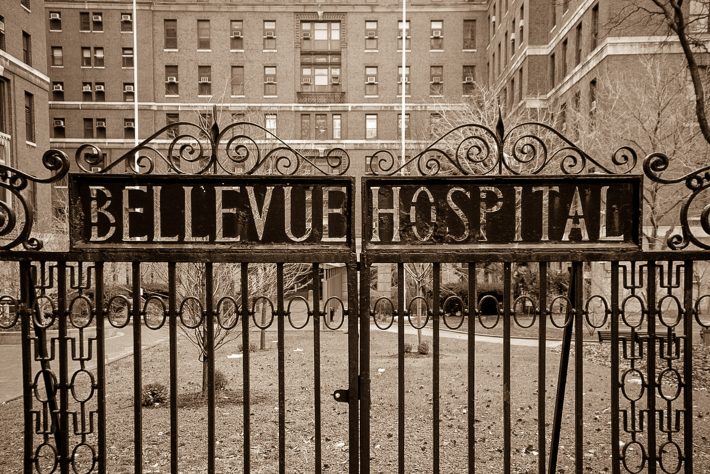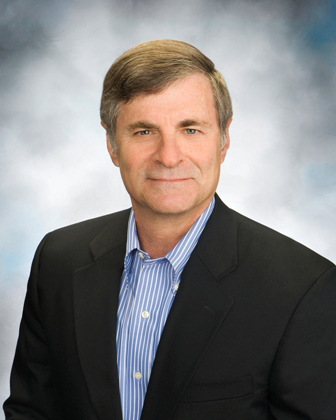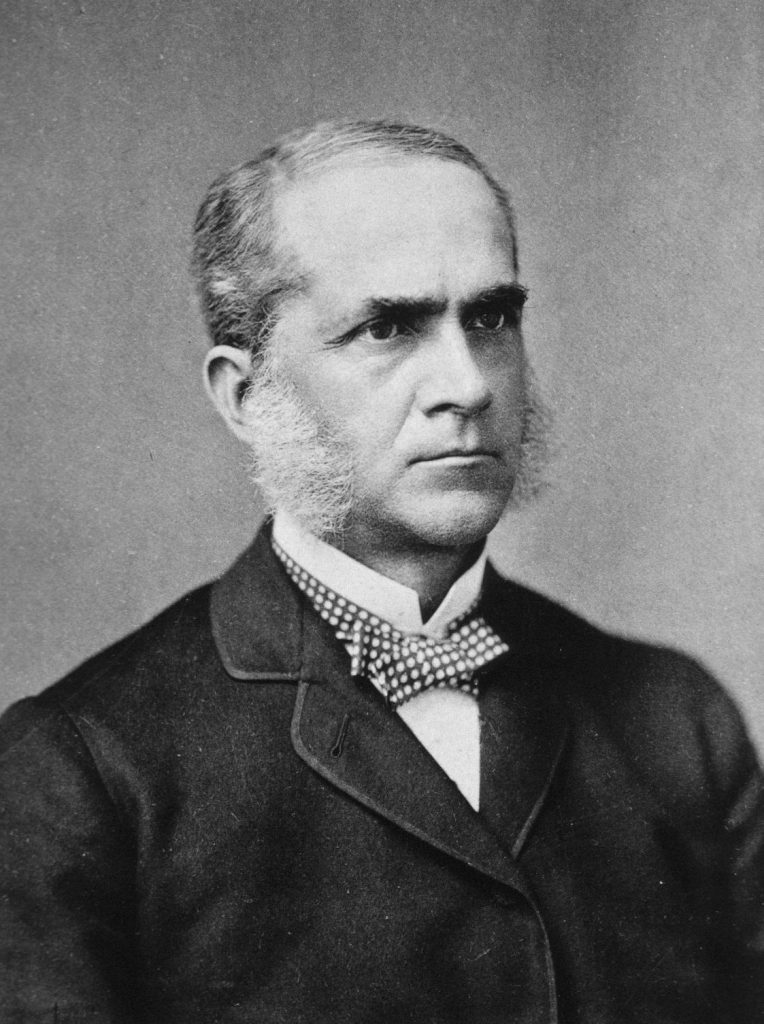Gabriel Redel-Traub interviews Dr. David Oshinsky
Last month, I had the pleasure of sitting down with David Oshinsky, director of the Division of Medical Humanities at NYU School of Medicine. He is the author of Bellevue:Three Centuries of Medicine and Mayhem at America’s Most Storied Hospital and won the Pulitzer prize for his book Polio: An American Story.
Gabriel Redel-Traub: Dr. Oshinsky, thanks so much for meeting with me.
David Oshinsky: My pleasure.
GRT: I really enjoyed reading your new book Bellevue. One of the aspects of the book that I appreciated was that in addition to being a history of the hospital, it was also, necessarily, a history of American medicine, New York and the United States in general. I’m wondering how you decided to center on Bellevue?
DO: That’s a good question, I’ll tell you where my interest began. I’m from Queens and I grew up in the Baby Boom era following World War ll. Bellevue was a national punchline at the time. If I was acting “weirdly,” my mother would say: “Keep it up, David, and you’re on your way to Bellevue.” The popular culture was saturated with it.
In truth, Bellevue had a long association with psychiatry and the psych wards. But for those of us from New York City, we fully understood Bellevue’s role beyond the psychiatric wards. That it was, on the one hand, the place where an injured cop, or fireman or construction worker would be sent, that its emergency services were second to none. It was our flagship public hospital- and a damned good one
I didn’t know at that point it was the oldest hospital in America. Or that it had been remodeled in the early 1900s by the iconic architectural firm of McKim, Mead & White. Or that giants of medicine had walked its halls-William Halsted, Walter Reed, Albert Sabin, Jonas Salk, Andre Cournand and Dickinson Richards, who shared the Nobel Prize for cardiac catheterization. That astonished me.
I often try to write about things that I remember. I grew up in the era before the polio vaccine, so it was it was the terror of each summer and that got me interested [in polio]. I wrote a biography of Joseph McCarthy because my parents bought our first television set to watch the historical Army-McCarthy hearings in 1954. And then Bellevue, once I came up [to NYU] to work at both the History Department and Department of Medical Humanities, I really became interested in Bellevue.
As you noted, Gabe, Bellevue is a segue into the history of American medicine, immigration, public health, and epidemic disease. And ultimately, I think, of America, itself. With such a long history-Bellevue has been around for close to three centuries–you have to do a bit of cherry picking to determine not only what is of particular interest to you, but also what will drive the story forward. So what I try to do as a writer is to seek out both watershed moments and powerful characters. And I hoped, as well, that the book would spur discussion about the future of health care in America- a topic much hotter now than when I began the book five years ago.
GRT: You talked a little bit about the importance of picking characters who move the story forward. I was wondering if there were any characters that you found particularly interesting as you were researching?
DO: One obvious choice was Alexander Anderson, the first true physician at Bellevue, who served during the Yellow Fever epidemics of the 1790s, when Bellevue was little more than a “pest house” for the dying victims of infectious disease. All of 23-years-old, Anderson stayed the course, treating his patients with courage and compassion, if little medical knowledge, as his family members, living near Wall Street, fell to the disease, one by one. This was an era of bleeding and purging. Anderson had no idea what caused the disease, or what the vector was. Fittingly, Bellevue’s Walter Reed would figure this out a full century later. In a span of weeks, Anderson lost his young son to Yellow fever, then his wife, his brother, and both his parents. Yet he stayed the course- the pioneer, in my mind, of the Bellevue ethos and tradition of compassionate patient care.
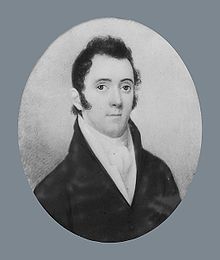
Valentine Mott– the most important surgeon of the early 19th century-
is another. [He was] particularly important in founding NYU Medical School and did some extraordinary work at Bellevue.
Another would be Charles Augustus Leale, the young Bellevue Medical School graduate who rushed to the side of the fallen Abraham Lincoln at Ford’s theatre, who stayed by Lincoln’s bedside, holding his hand, until the president died.
And Leale’s mentor, Frank Hamilton, the superb military surgeon who played a major role in the death of President James A. Garfield. Hamilton vehemently opposed germ theory and antiseptic medicine. Sticking his dirty fingers and unsterilized probes into Garfield’s wounds, he likely helped cause the infections that killed the president, who would have survived had he been sewed up antiseptically and left alone. His bullet wounds were not remotely fatal. The good news is that Hamilton’s actions helped spur the medical debate over antiseptic methods, leading to major reforms in medical/surgical practice.
Stephen Smith, the father of American public health, who turned a well-meaning social cause into a highly respected profession.
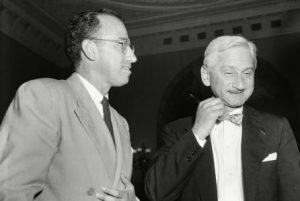
Photo by Henry Griffin/AP/REX/Shutterstock (6647583a)
Salk and Sabin, the developers of the two polio vaccines, who both attended NYU Medical School and walked Bellevue’s halls– in part because these facilities did not have a quota on the admission of Jews, unlike most other medical facilities of that era.
Lauretta Bender, who ran the children’s psych wards at Bellevue for decades in the 20th century, and was involved in some controversial experiments with electric shock treatment.
Edith Lincoln, who worked in the TB wards, the children’s TB wards, for decades in the 20th century was vital in adding an antibiotic cocktail [to the treatment regimen].
Cournand and Richards, who won the Nobel prize for cardiac catheterization and on and on, but basically one of the threads of the book is finding these people, and letting them drive the narrative through their actions.
GRT: It is amazing all of the people who came through the hospital.
DO: And there are so many more: Halsted and William Welsh. Joseph Goldberger who discovered the cause of pellagra, William Hallock Park who brought us the diphtheria antitoxin. I mean the list just goes on and on.
GRT: You talked a little bit about germ theory and the importance of its discovery. It reminded me of an exchange I recently had with my step dad who is reading Bellevue. He emailed me a couple weeks after he started reading it, and said, “Two-thirds of the way through this book and these doctors are still purging, and bleeding people, and believe in Miasma theory, how long did it take your profession to figure this out?!?”
[Laughing]
I’m wondering in terms of writing about these giants of 19th century medicine, was it surprising how many of them were so misinformed?
DO: A good question. If you look at western medicine, until the early 1800s,there’s very little of what we would consider “modern”- the medicine that we take for granted today or that we actually use. Obviously Jenner, with his small pox vaccine coming in the late 1790s is among the the first. But one of the things I tried to show, and it’s really an interesting question you’ve raised, is that it does take a very long time.

Consider, for example, the use of anesthesia in operations. Pain management [was] an enormous breakthrough. In the old days, you had to perform an operation in under a minute or the patient would die of shock and blood loss. Anesthesia really allowed you to take longer, to probe deeper, to look at various parts of the body that you would never have thought of operating on in the past. On the other hand, anesthesia also increased the danger of infection, because you’re probing around for longer periods of time, deep into areas of the body cavity. And this obviously has consequences. So, anesthesia without an antiseptic medicine, without Joseph Lister and Pasteur and others, is both a blessing and a curse. But once you have these two things together, then you don’t have to worry about pain on the operating table, or post-operative infection, and that really is the two halves of the walnut.
Your step dad is correct. It took a really long time for things we take for granted today to come into favor. Well into the Civil War, germ theory was irrelevant, bleeding and purging were very common. And we look at this today and we wonder why? On the other hand, what I would tell your step dad, is that physicians a hundred years from now will be looking back, and perhaps wondering why we’re using chemotherapy, and saying, “Oh my God how primitive these people were!” But he is right that the needle did not move significantly until the 19th century.
GRT: I was reading Bellevue right as Trump’s first travel ban came along which made me think about Bellevue’s history as an immigrant hospital and the importance of Bellevue’s ‘no one gets turned away’ mentality. I’m wondering if you think this ethos is under attack right now?
DO:The answer at this point is we don’t know.
Bellevue turns no one away, we don’t ask questions. A very large percentage of our patients are undocumented, un-domiciled, and uninsured, and that’s the way it’s been for generations, though, certainly in terms of undocumented [patients] the numbers are going up today. Whether that will hold in the future remains to be seen.
One of the things that is interesting is that President Obama assumed that with Obamacare, there would be less need to fund public hospitals, which deal with lots of uninsured patients, because these patients would now have some form of insurance. But Obamacare, for political reasons, and by way of a compromise, did not cover people who are undocumented.
So there are real problems. With Obamacare, came cuts to what were called disproportionate share hospitals, in other words, cuts in federal money going to hospitals that treat a very large percentage of uninsured patients.
There are two competing arguments here. One is that that everybody deserves healthcare, and whether you’re documented or undocumented, healthcare must be provided. And New York city- to its everlasting credit- is the only city that provides free medical care to the indigent sick.
The other side of the argument is whether we should or should not give medical care beyond absolute emergencies to undocumented immigrants. These are the people who bus your tables and make your salads. These are the people who are your restaurant workers; these are the people that take care of your children in daycare centers and in your homes. These are the people who ride on subways right next to you. So, it behooves all of us to make certain that these people get medical care because they are part of a larger community. And they have the possibility of putting everyone at risk if they do not get the medical care they need.
GRT: So the ACA doesn’t provide any funding to Bellevue then?
DO: [No]. It’s [funded by] federal money, by the city of New York through HHC Health Hospitals Cooperation and by Medicare and Medicaid. Unlike a voluntary hospital we don’t have any buildings named after big donors because we don’t have any big donors. This is all public money. Bellevue is the quintessential public hospital, and that’s where our funding comes from, and that makes us vulnerable in times of crises- cultural as well as economic.
We did have a time when there were close to 20 public hospitals in New York City. We’re down to about 11 emergency care facilities, with Bellevue being the flagship. I think that number will decrease further. I think that the emphasis even in liberal administrations now is to focus more on ambulatory care, on clinics, on preventive medicine. Hospitals are sort of last resort facilities, particularly public hospitals. If you look at Los Angeles, Chicago, across the country, public hospitals are vanishing. New York City is an anomaly.
I don’t see Bellevue going under. Bellevue is too iconic. Everyone knows the services it performs. We have 500,000 people coming through our various clinics every year. So I think Bellevue will survive. But we are surrounded by a sea of red ink. And there’s no doubt that that could be increasingly problematic in the future.
GRT: There is a chapter in Bellevue where you talk about the growth and birth of the hospitals that still exist in New York City– Bellevue, New York Hospital, Mount Sinai, Lenox Hill etc.- and there was already a clear sense of the public-private divide. Even in the early 19th century certain hospitals were for patients of certain races or ethnicities or social classes. I was wondering if you could just speak more about that history and the creed in which different hospitals came about.
DO: Sure. New York City always had Bellevue and by the late 18th century there was also New York Hospital which was what you would call a voluntary hospital. It was supported by very powerful merchants in New York City, and it was for those deemed ‘the deserving poor.’ By the deserving poor they generally meant people who were fully employed, people who were not considered to be drunkards or prostitutes. You actually had to go through a board review to get into the hospital.
Bellevue was for everybody else. When there was a cholera epidemic, a typhus epidemic, an immigrant off the boat who either had a mental or a physical disability, Bellevue was the place that took them in.. So, there was always a class difference even though you’re talking about the working class largely defined. There was still the ‘deserving poor’ and ‘undeserving poor.’ Bellevue got the lion’s share of ‘the undeserving poor.’
There was also a lot of what we call patient dumping. Where if New York Hospital couldn’t take care of a certain patient, or the patient was rowdy or this or that–
GRT: Or too sick, right?
DO: Or too sick exactly.
GRT: Kind of cooking the books.
DO: Exactly, you’ve read the book carefully. If the patient was going to die, Bellevue was his destination. (Which didn’t help Bellevue statistics to any great degree in terms of mortality.)
Basically what you have in the 1850s, there’s the birth of a Catholic hospital, a Jewish hospital and a German hospital. By about 1900, you get a real difference in choice. It’s not just ethnicity and class. Beginning by the early 1900s, New York hospitals are actually looking for paid patients, patients who can afford to come and are willing to pay the freight. And the reason that happens, Gabe, is that by 1900, really for the first time, it’s safer to be treated in a hospital than your own home. Hospitals now have a professional nursing staff, they have X-ray machines, they have antiseptic medicine. They have anesthesia and all kinds of procedures. They can do blood work and the like. So there’s a reason to go to a hospital.
But if you are a middle or upper-middle class person, you are only going to want to go to a hospital that re-creates the lifestyle you have in your house. So you had hospitals now like Mount Sinai and New York Hospital and Lenox Hill that for the first time are not using wards, but are creating private or semi-private patient rooms. The food is better. The nursing care is round the clock. You can have endless visiting hours and you can even bring your own family physician in to treat you. These are all things that Bellevue, a public hospital, couldn’t provide. So you began to have a serious split then, between what a private hospital could afford to do with paid patients and what Bellevue could not afford to do.
Now I will say that these paying hospitals, like Mount Sinai for example, also had charity wards. Bellevue only had charity wards. The difference at Mount Sinai was if you pay your money, you could have a private room overlooking Central Park with beautiful furniture, excellent food, and if you were in the charity ward at Mount Sinai you were overlooking the kitchen or a side street and there were 40 other people in the ward with you. This change gave Bellevue an even more concrete sense of whom it served and how it differed from others hospitals.
What makes Bellevue really special, even in [the late 19th and early 20th century] was that it was a great teaching hospital. Columbia P&S, Cornell and NYU all did their teaching there. [They all] sent their house staff and their attending physicians to Bellevue because these folks were going to see every disease ad affliction known to humankind. And also, quite frankly, they could practice their craft on what I call ‘uncomplaining bodies.’ Now these weren’t Frankenstein-like experiments. These people believed that they were moving the ball forward in medical terms. And they were, but some were very controversial experiments and Bellevue became [known for] being a center for that sort of thing.
But certainly by the early 20th century, Bellevue’s role as the premiere, flagship, public hospital, open to everyone, turning no one away, was concretely embedded in the minds of New York City residents and beyond.
GRT: Well that history of Bellevue as a special teaching hospital and a place where no one is turned away is definitely one of the reasons I came to school here.
DO: I’m glad you did and you’re not alone.
GRT: Thanks so much.
DO: My pleasure, I’m glad you enjoyed the book. And tell your step dad to keep reading, it gets better…

